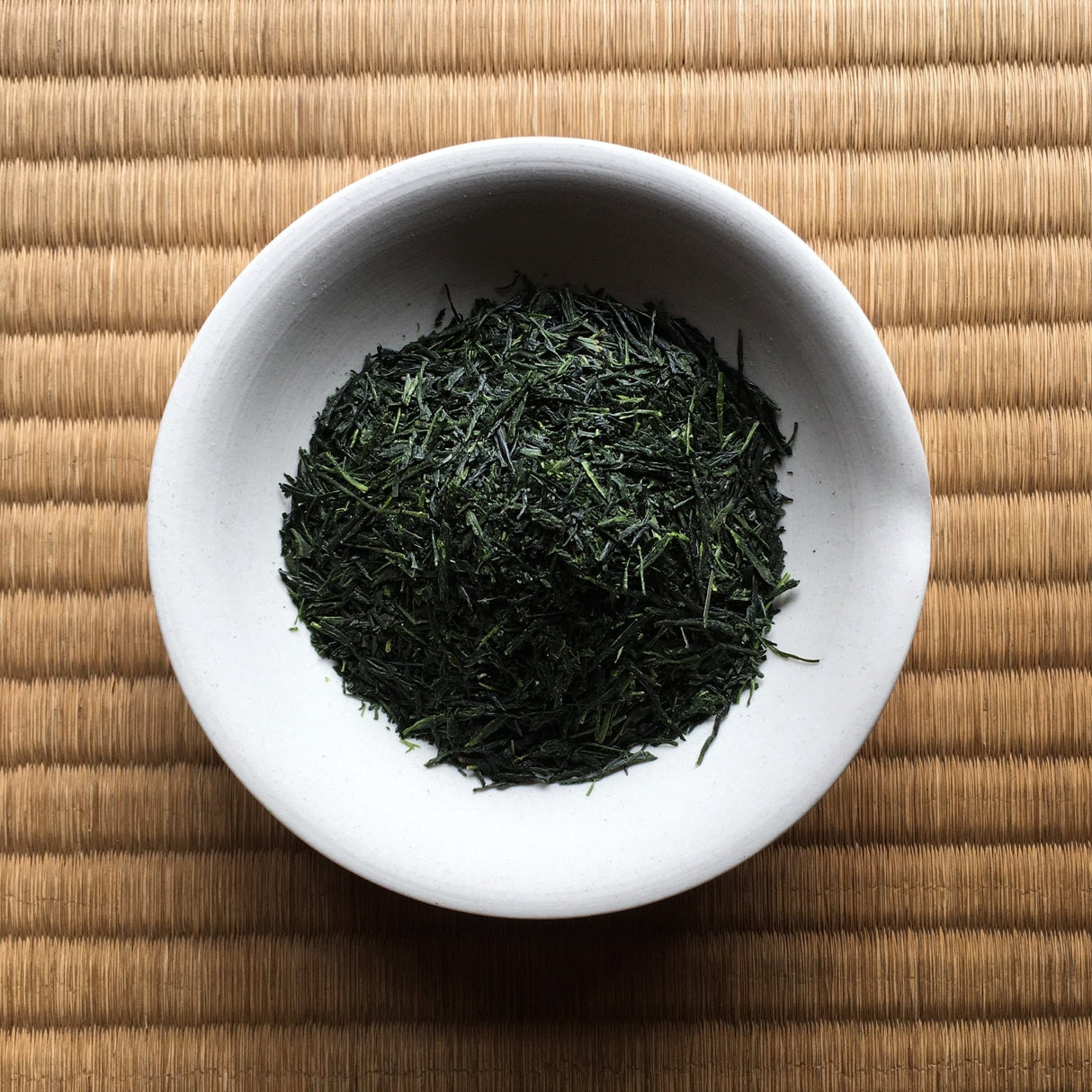#0751.K2 玉露さえみどり - 口切 - 鹿児島県霧島産自生緑茶
#0751.K2 玉露さえみどり - 口切 - 鹿児島県霧島産自生緑茶 - 10g / 0.35オンス 【在庫切れ】取り寄せ中につき、入荷次第発送します。大きいサイズを小さい袋に小分けするには1-2週間、取り寄せは2-3週間がかかりますが、商品によって異なります。現在、各メーカーの抹茶生産は非常に時間がかかり、1-3ヶ月間がかかる場合もあります。
受け取りを利用可能か読み込めませんでした
商品が在庫切れの場合は、ウィッシュリストに追加して、商品が購入可能になったときにメールで通知を受け取れるようにしてください。
配送と送料について
配送と送料について
送料は国、配送業者、配送方法によって異なります。商品を在庫に追加し、カートページに移動して送料見積もりツールをご確認ください。一部の国では、ご購入後に手動で送料を計算する場合があります。
YUNOMI.LIFEの配達保証:追跡番号付きの航空便で発送されるすべての注文の配達を保証します。 (条件が適用されます。通知された例外。)まれに、輸入のために追加の通関手続きが必要になる場合があります。私たちは最大限に支援いたします。お客様の過失によらず、発送から1ヶ月以内に注文が届かない場合は、追加料金なしで注文を交換または返金いたします。お客様の住所への配達が困難であると判断した場合、当社は出荷を拒否する権利を留保します。この保証は、受取人が通関手数料および輸入税の支払いを怠ったり拒否したりした場合、郵便局または配送センターで保留中の注文の受け取りを怠った場合、または間違った住所のために注文が配達できない場合には適用されません。Yunomi.lifeの配達保証は卸売購入には適用されません。
口切
手前茶の口切にさへ ゆふべ哉
手前茶の口切りにさえ夕べかな
目の前のお茶、私は封印を破る、夕方
この詩は、1806年に日本を代表する俳人、小林一茶によって詠まれたものです。「口切」とは、冬に茶葉の封を切ることを意味します。春の収穫後、伝統的に(特に現代の冷蔵技術が普及する以前は)、茶生産者は玉露(および抹茶に使われる碾茶)を壺(つぼ)に封印し、涼しい場所(地下や洞窟など)に保管していました。暑い夏から冬にかけて保管することで、茶葉は熟成し、残留する苦味のあるカテキンが分解され、風味がまろやかになります。この伝統は、京都をはじめとする地域で行事や儀式として定着しています。
この言葉は詩人たちによって季語としても使われ、俳句に新たな意味を添えています。私の翻訳が完全に正確かどうかは分かりません…「にさえ」の意味と「かな」のニュアンスが理解できませんでした…もしあなたが日本の詩を学んでいるなら、コメント欄で訂正をお願いします!
このお茶は、この製法を踏襲しており、その伝統と私の好きな詩人の一人である小林一茶に敬意を表して「口切り」と名付けました。
有機栽培
もう一つの特徴は、有機栽培にもかかわらず、旨味が豊かであることです。非有機栽培では、農家が茶樹に栄養分を注入することで、濃厚で豊かな旨味が生まれます。しかし、その旨味は害虫を引き寄せ、駆除のために農薬が必要になります。有機栽培では、害虫による葉の食害を避ける必要があるため、多くの有機玉露は高い旨味レベルに達することができません。
「口切」は、その茶葉を栽培した農家と、茶葉を9ヶ月間熟成させ、さらに茶葉の甘みを引き出すだけの生焙煎を行う精製者の技術により、なめらかで芳醇な玉露の味わいを実現しています。
サエミドリ品種
最後に、「口切り」は、天然のうま味が豊かで鮮やかな緑色のさえみどり品種を使用した単一品種であることの利点を活かしています。
製品情報
- 原材料:緑茶
- 品種:さえみどり
- 収穫:春
- 農園:西茶園
- 包装:湯のみ
- 地域: 鹿児島県霧島市
- 遮光:3~4週間(目安)、直接カバー
- 蒸し方:普通(ただし若くて柔らかい葉は深蒸しに似た仕上がりになります)
- 認証:卸売りのお客様には、このお茶はオーガニック認証を取得できます。詳しくはお問い合わせください。
-
品種さえみどり
-
収穫時期ファーストフラッシュ(春)
-
産地鹿児島県
支払いのセキュリティー対策
支払い方法
お支払い情報は安全に処理されます。当社はクレジットカード情報を保存したり、お客様のクレジットカード情報にアクセスしたりすることはありません。



